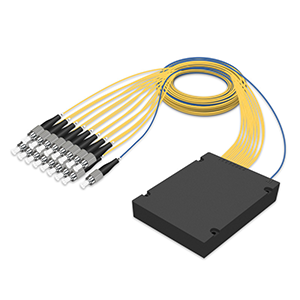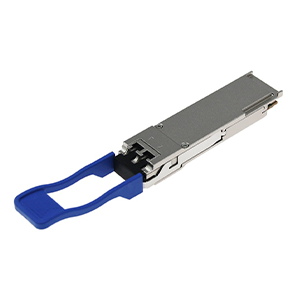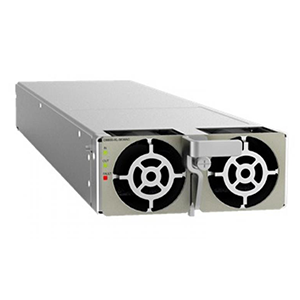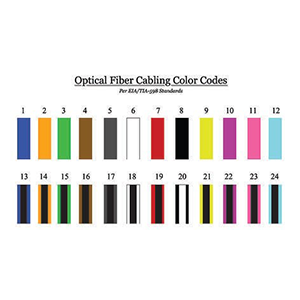Ethernet cables play an important role in modern networks. This article will explore the maximum transmission distance of Ethernet cables. We will first define the technical standards and classifications of Ethernet cables and outline their application scenarios in the network. Next, we will analyze the key factors that affect the transmission distance of Ethernet cables, including cable type, transmission rate, and network environment.
Then, we will specify the maximum transmission distance of common Ethernet cable types, such as Cat5e, Cat6, Cat6a, and Cat7. Finally, we will introduce some solutions to overcome the limitations of standard transmission distances, such as using repeaters or switches, and adopting fiber-optic Ethernet.
Basic knowledge of Ethernet cables
Ethernet cables are physical media used to transmit data between network devices. Common types include Cat5e, Cat6, Cat6a, etc., supporting different transmission speeds and bandwidths. They are usually composed of copper wires, have certain anti-interference capabilities, and are widely used in home, office, and data center network connections.
Technical standards and classification of Ethernet cables:
Ethernet cables are important media for connecting network devices and transmitting Ethernet data signals. They mainly include the following technical standards:
(1) Cat5e (Category 5 enhanced)
(2) Cat6 (Category 6)
(3) Cat6a (Category 6A)
(4) Cat7 (Category 7)
(5) Cat8 (Category 8)
These classification standards reflect the technological evolution of Ethernet cables in terms of transmission bandwidth, anti-interference, etc. Cables with higher standards can provide higher performance.
Application scenarios of Ethernet cables in the network:
Ethernet cables are widely used in various network environments, mainly including the following scenarios:
(1) Connecting network devices:
- Used to connect network devices such as computers, routers, switches.
(2) Transmitting data signals:
- Carrying Ethernet data signals for transmission between network devices.
- Supporting data transmission at different network rates from 10Mbps to 10Gbps.
Whether it is a local area network, a wide area network or a data center network, Ethernet cables are important network infrastructure to ensure the interconnection and data transmission between network devices. In short, the continuous development of Ethernet cable technical standards has enabled it to play a key role in various network application scenarios.
Factors affecting the transmission distance of Ethernet cables
Factors affecting the transmission distance of Ethernet cables include cable type, signal frequency, bandwidth, and external electromagnetic interference. High-frequency signals and lower-quality cables may cause signal attenuation, reducing the effective transmission distance. Interference from the external environment can also affect signal stability and shorten the transmission distance.
The impact of cable type on transmission distance:
Different types of Ethernet cables have different physical properties, which will affect their transmission distance:
(1) Cable core material and insulation layer design
(2) Cable shielding performance
(3) Cable stray parameter characteristics
Generally speaking, high-end cables with better performance can support longer transmission distances.
The impact of transmission rate on distance:
The transmission rate of Ethernet cable is also an important factor affecting the transmission distance:
(1) High-speed transmission requires higher signal quality
(2) Signal distortion and attenuation will increase with the increase of distance
(3) The requirements for the physical properties and environmental conditions of the cable are more stringent
Therefore, high-speed Ethernet is usually limited to a relatively short transmission distance.
The impact of network environment on cable transmission:
The network environment in which the cable is located will also have an impact on the transmission distance, mainly including:
(1) Electromagnetic interference environment
(2) Signal attenuation and reflection
(3) The quality and integrity of the cable routing
These environmental factors may cause signal distortion and reduced transmission quality, thereby limiting the effective transmission distance of the cable. In summary, the transmission distance of Ethernet cable is affected and restricted by many factors such as cable type, transmission rate and network environment. In actual applications, appropriate trade-offs and choices need to be made according to specific circumstances.
Maximum transmission distance of common Ethernet cable types
The maximum transmission distance of common Ethernet cables varies by type. Cat5e and Cat6 cables generally support stable transmission within 100 meters, which is suitable for most network needs. Cat6a cables can support higher bandwidth and frequency, and the maximum transmission distance is still 100 meters, but it performs better in high-speed data transmission.
There are some differences in the maximum transmission distance of different types of Ethernet cables, as follows:
- Cat5e cable: up to 100 meters
The maximum transmission distance of Cat5e cable is 100 meters. This is the most common Ethernet cable standard currently.
Cat6 cable: up to 100 meters
Cat6 cable has a maximum transmission distance of 100 meters, the same as Cat5e.
Cat6a cable: up to 100 meters
Cat6a is an improved version of Cat6, and its maximum transmission distance is also 100 meters.
Cat7 cable: up to 100 meters
Cat7 cable has a maximum transmission distance of 100 meters, which is basically the same as previous generations.
Fiber optic Ethernet: up to several thousand meters
- Unlike copper cables, fiber optic Ethernet can support longer transmission distances, up to several thousand meters.
It should be noted that the above transmission distance is only the maximum value under normal circumstances. In actual applications, it may be slightly different due to various environmental factors. In general, the Ethernet cable standard based on copper cable has certain limitations in the maximum transmission distance, which is generally limited to within 100 meters. Fiber-optic Ethernet can break through this limitation and support longer distance connections.
Solutions beyond standard distances
When the Ethernet cable exceeds the standard transmission distance, repeaters, signal amplifiers, fiber-optic cables, or network switches can be used to extend the transmission distance. These devices can effectively reduce signal attenuation and ensure stable data transmission, which is suitable for long-distance network connection needs.
For Ethernet cables that exceed the standard 100-meter transmission distance, the following solutions can be adopted:
Use repeaters or switches to extend the transmission distance:
- Appropriately deploy repeaters or switch devices where the distance exceeds the standard.
- Repeaters can amplify and resend signals to extend transmission distance.
- Switches can divide the network into multiple sections to isolate signal transmission.
Using fiber-optic Ethernet to overcome physical distance limitations:
- Using fiber-optic Ethernet technology can greatly increase transmission distance.
- Fiber-optic cables can support long-distance transmission of several thousand meters, far exceeding the limitations of copper cables.
- Applicable to network scenarios that need to cover a wide geographical area.
Pay attention to cable laying and connection quality:
- Ensure good cable laying and connection quality to avoid signal distortion and attenuation.
- Carefully select cable types and specifications to ensure that they match the network environment.
- Also pay attention to cable joint processing to ensure that the connection is firm and reliable.
In summary, for situations that exceed the standard transmission distance, it can be solved by deploying relay equipment, adopting fiber optic technology, and paying attention to the quality of cable laying. Choosing a suitable solution requires weighing the actual network environment and needs.
Summary
The transmission distance of Ethernet cable is a key indicator that needs to be considered in network deployment. Our company has long focused on the research and development and application of network infrastructure technology and has rich practical experience. We provide a full range of Ethernet cable products, including different types and specifications, to meet the needs of different network scenarios.
Our Ethernet cable products use industry-leading technical solutions and have achieved excellent levels in transmission performance, reliability and environmental adaptability. At the same time, our team of engineers will provide you with professional demand analysis and solution design services to ensure that the deployed Ethernet cable solution can meet your actual needs to the greatest extent. Contact us now to learn more.
Ethernet Cable FAQ
The maximum distance for a standard Ethernet cable (Cat5e, Cat6) is 100 meters (328 feet) for data transmission without the need for signal boosters or repeaters.
The maximum distance remains 100 meters for most Ethernet cables like Cat5e, Cat6, and Cat6a. However, Cat6a can support higher speeds (10 Gbps) over the full 100 meters compared to Cat5e and Cat6.
Exceeding the 100-meter distance can result in signal loss, reduced data transmission speeds, increased latency, and potential data errors or connection drops.
Yes, you can extend the distance using devices such as Ethernet switches, hubs, repeaters, or fiber-optic converters, which help to boost the signal over longer distances.
The maximum distance for a Cat6a cable is also 100 meters (328 feet) for standard Ethernet applications, but it can support 10 Gbps speeds over this distance.
Higher-quality cables with better shielding and materials may perform better at the maximum distance, reducing the likelihood of interference and maintaining signal integrity.
The use of PoE does not typically reduce the maximum distance of 100 meters for data transmission, but the power delivered can decrease with distance, especially if the cable is of lower quality or thinner gauge.
Standard copper Ethernet cables are limited to 100 meters, but fiber-optic cables can transmit data over much longer distances, often reaching several kilometers depending on the type and application.
Fiber-optic Ethernet can extend up to several kilometers, with single-mode fiber reaching distances of up to 40 kilometers or more, depending on the equipment used.
Environmental factors such as electromagnetic interference, temperature, and physical obstructions can affect signal quality and potentially reduce the effective maximum distance of an Ethernet cable. Proper shielding and installation can help mitigate these effects.





